House of Medici, Marie de Médici, Louis XIV, Doria, Pamphilj, Landi, Aldobrandini, Borgias families. – Mythology versus religion
House of Medici, Marie de Médici, Louis XIV, Doria, Pamphilj, Landi, Aldobrandini, Borgias families.
by Kalina
Jul 5
The House of Medici or Famiglia de' Medici was a political dynasty, banking family and later royal house that first began to gather prominence under Cosimo de' Medici in the Republic of Florence during the late 14th century. The family originated in the Mugello region of the Tuscan countryside, gradually rising until they were able to found the Medici Bank. The bank was the largest in Europe during the 15th century, seeing the Medici gain political power in Florence — though officially they remained simply citizens rather than monarchs.
The Medici produced four Popes of the Catholic Church—Pope Leo X (1513–1521),Pope Clement VII (1523–1534), Pope Pius IV (1559–1565), and Pope Leo XI (1605); two regent queens of France—Catherine de' Medici (1547–1559) and Marie de' Medici(1600–1610); and, in 1531, the family became hereditary Dukes of Florence. In 1569, the duchy was elevated to a grand duchy after territorial expansion.
http://en.wikipedia.org/wiki/House_of_Medici
The Medici produced four Popes of the Catholic Church—Pope Leo X (1513–1521),Pope Clement VII (1523–1534), Pope Pius IV (1559–1565), and Pope Leo XI (1605); two regent queens of France—Catherine de' Medici (1547–1559) and Marie de' Medici(1600–1610); and, in 1531, the family became hereditary Dukes of Florence. In 1569, the duchy was elevated to a grand duchy after territorial expansion.
http://en.wikipedia.org/wiki/House_of_Medici
Pope Leo X (11 December 1475 – 1 December 1521), born Giovanni di Lorenzo de' Medici, was the Pope from 1513 to his death in 1521. He was the last non-priest (only a deacon) to be elected Pope. He is known for granting indulgences for those who donated to reconstruct St. Peter's Basilica and his challenging of Martin Luther's 95 Theses. He was the second son of Lorenzo de' Medici, the most famous ruler of the Florentine Republic, and Clarice Orsini. His cousin, Giulio di Giuliano de' Medici, would later succeed him as Pope Clement VII (1523–34).
Several modern historians have concluded that Leo was homosexual. Contemporary tracts and accounts such as that of Francesco Guicciardini have been found to allude to active same-sex relations – alleging Count Ludovico Rangone and Galeotto Malatesta among his lovers.
http://en.wikipedia.org/wiki/Pope_Leo_X
Several modern historians have concluded that Leo was homosexual. Contemporary tracts and accounts such as that of Francesco Guicciardini have been found to allude to active same-sex relations – alleging Count Ludovico Rangone and Galeotto Malatesta among his lovers.
http://en.wikipedia.org/wiki/Pope_Leo_X
Pope Leo X with Cardinals Giulio de' Medici and Luigi de' Rossi (left, future Pope Clement VII)
Clement VII (26 May 1478 – 25 September 1534), born Giulio di Giuliano de' Medici, was a cardinal from 1513 to 1523 and was Pope from 1523 to 1534. He was born in Florence one month after his father's death. His father, Giuliano de' Medici, had been assassinated. Although his parents had not had a formal marriage, a canon law loophole allowing for the parents to have been betrothed per sponsalia de presenti meant that Giulio was considered legitimate. He was thus the nephew of Lorenzo the Magnificent, who educated him in his youth. Clement's mother, Fioretta Gorini, also died leaving him an orphan.
Giulio was made a Knight of Rhodes and Grand Prior of Capua, and, upon the election of his cousin Giovanni de' Medici to the pontificate as Leo X (1513–21), he soon became a powerful figure in Rome. Upon his cousin's accession to the papacy, Giulio became his principal minister and confidant, especially in the maintenance of the Medici interest at Florence as archbishop of that city. On 23 September 1513, he was made cardinal and he was consecrated on 29 September. He had the credit of being the main director of papal policy during the whole of Leo X's pontificate, especially as cardinal protector of England. He was also the titular Bishop of Worcester in the county of Worcestershire in England as Administrator or the See of Worcester.
As for the arts, Clement VII is remembered for having ordered, just a few days before his death, Michelangelo's painting of The Last Judgment in the Sistine Chapel.
http://en.wikipedia.org/wiki/Pope_Clement_VII
Giulio was made a Knight of Rhodes and Grand Prior of Capua, and, upon the election of his cousin Giovanni de' Medici to the pontificate as Leo X (1513–21), he soon became a powerful figure in Rome. Upon his cousin's accession to the papacy, Giulio became his principal minister and confidant, especially in the maintenance of the Medici interest at Florence as archbishop of that city. On 23 September 1513, he was made cardinal and he was consecrated on 29 September. He had the credit of being the main director of papal policy during the whole of Leo X's pontificate, especially as cardinal protector of England. He was also the titular Bishop of Worcester in the county of Worcestershire in England as Administrator or the See of Worcester.
As for the arts, Clement VII is remembered for having ordered, just a few days before his death, Michelangelo's painting of The Last Judgment in the Sistine Chapel.
http://en.wikipedia.org/wiki/Pope_Clement_VII
Clement VII. Sebastiano del Piombo
Pius IV (31 March 1499 – 9 December 1565), born Giovanni Angelo Medici, was Popefrom 1559 to 1565. He is notable for presiding over the culmination of the Council of Trent.
Under his reign Michelangelo re-built the basilica of Santa Maria degli Angeli (in the Diocletian's Baths) and the eponymous Villa Pia, now known as Casina Pio IV and headquarters of the Pontifical Academy of Sciences, was designed by Pirro Ligorio in the Vatican Gardens.
http://en.wikipedia.org/wiki/Pope_Pius_IV
Under his reign Michelangelo re-built the basilica of Santa Maria degli Angeli (in the Diocletian's Baths) and the eponymous Villa Pia, now known as Casina Pio IV and headquarters of the Pontifical Academy of Sciences, was designed by Pirro Ligorio in the Vatican Gardens.
http://en.wikipedia.org/wiki/Pope_Pius_IV
Pope Pius IV
Pope Leo XI (2 June 1535 – 27 April 1605), born Alessandro Ottaviano de' Medici, was Pope from 1 April 1605 to 27 April of the same year. He was born in Florence: his mother, Francesca Salviati, was a daughter of Jacopo Salviati and Lucrezia de' Medici, a sister of Leo X, Pietro Aldobrandini, the leader of the Italian party among the cardinals, allied with the French cardinals and brought about the election of Alessandro against the express wish of King Philip III of Spain. King Henry IV of France is said to have spent 300,000 écus in the promotion of Alessandro's candidacy. On 1 April 1605, Alessandro ascended the papal throne with the name Leo XI after his uncle Pope Leo X, being then almost seventy years of age, but was taken ill immediately after his coronation and died within the month.
http://en.wikipedia.org/wiki/Pope_Leo_XI
http://en.wikipedia.org/wiki/Pope_Leo_XI
Leo XI
Pietro Aldobrandini (31 March 1571 – 10 February 1621) was an Italian Cardinal and patron of the arts.
He was made a cardinal in 1593 by his uncle, Pope Clement VIII. He took over the duchy of Ferrara in 1598 when it fell to the Papal States. He became archbishop of Ravenna in 1604.
He bought the Palazzo Doria Pamphilj,] and spent large sums on this and other buildings such as the Villa Aldobrandini. He was a patron of Torquato Tasso, and of Girolamo Frescobaldi.
http://en.wikipedia.org/wiki/Pietro_Aldobrandini
He was made a cardinal in 1593 by his uncle, Pope Clement VIII. He took over the duchy of Ferrara in 1598 when it fell to the Papal States. He became archbishop of Ravenna in 1604.
He bought the Palazzo Doria Pamphilj,] and spent large sums on this and other buildings such as the Villa Aldobrandini. He was a patron of Torquato Tasso, and of Girolamo Frescobaldi.
http://en.wikipedia.org/wiki/Pietro_Aldobrandini
Pietro Aldobrandini
Cardinal Pietro Aldobrandini was fascinated with Greek mythology. Centaur, Faun (god Pan), Atlas, and Polyphemus in delle Acque.
Villa Aldrobandini - Teatro delle Acque
The Borgias, also known as the Borjas, Borjia, were a European Papal family of Italian and Spanish origin with the name stemming from the familial fief seat of Borjabelonging to their Aragonese Lords; they became prominent during the Renaissance.
The Borgias became prominent in ecclesiastical and political affairs in the 1400s and 1500s. They produced two popes during this period, Alfons de Borja who ruled asPope Calixtus III during 1455–1458, and Rodrigo Lanzol Borgia, as Pope Alexander VI, during 1492–1503. Today they are remembered for their corrupt rule during the reign of Alexander VI. They have been accused of many different crimes, including adultery, simony, theft, rape, bribery, incest, and murder (especially murder byarsenic poisoning). Because of their search for power, they made enemies of other powerful families such as the Medici and the Sforza, as well as the influential Dominican friar Savonarola.
John Collier, A Glass of Wine with Caesar Borgia from left: Cesare Borgia (pouring - probably poisoned - wine), Lucrezia, Pope Alexander and a young man holding an empty glass.
Coat of arms of the family Borgia
Della Rovere is a noble family of Italy. Coming from modest beginnings in Savona, Liguria, the family rose to prominence through nepotism and ambitious marriages arranged by two Della Rovere popes, Francesco della Rovere, who ruled as Pope Sixtus IV (1471-1484) and his nephew Giuliano (Pope Julius II, 1503-1513). Pope Sixtus IV is known for having built the Sistine Chapel, which is named for him. The Basilica San Pietro in Vincoli in Rome is the family church of the della Rovere.
Like a number of Popes, Sixtus IV adhered to the system of nepotism. In the fresco by Melozzo da Forlì he is accompanied by his Della Rovere and Riario nephews, not all of whom were made cardinals: the protonotary apostolic Pietro Riario (on his right), the future Pope Julius II standing before him, and Girolamo Riario and Giovanni della Rovere behind the kneeling Platina, author of the first humanist history of the Popes. His nephew Pietro Riario also benefited from his nepotism. Pietro became one of the richest men in Rome and was entrusted with Sixtus IV's foreign policy. However, Pietro died prematurely in 1474, and his role passed to Giuliano della Rovere.
The secular fortunes of the Della Rovere began when Sixtus invested his nephew Giovanni with the lordship of Senigallia and arranged his marriage to the daughter ofFederico III da Montefeltro, duke of Urbino; from this union came a line of Della Rovere dukes of Urbino that lasted until the line expired in 1631. Six of the thirty-four cardinals that he created were his nephews.
Pope Sixtus IV appoints Bartolomeo Platina prefect of the Vatican Library
Pope Julius II (5 December 1443 – 21 February 1513), nicknamed "The Fearsome Pope" (Il Papa Terribile)[1] and "The Warrior Pope" (Il Papa Guerriero), born Giuliano della Rovere, was Pope from 1503 to 1513. His papacy was marked by an active foreign policy, ambitious building projects, and patronage for the arts.
He was promoted to cardinal, taking the same title formerly held by his uncle, Cardinal of San Pietro in Vincula. With his uncle as Pope, he obtained great influence, and he held no fewer than eight bishoprics, including Lausanne from 1472, and Coutances from 1476, along with the archbishopric of Avignon.
In the capacity of papal legate he was sent to France in 1480, where he remained four years, and acquitted himself with such ability that he soon acquired a paramount influence in the College of Cardinals, an influence which increased rather than diminished during the pontificate of Pope Innocent VIII. Shortly after in 1483 an illegitimate daughter was born, Felice della Rovere.
Julius was not the first pope to have fathered children before being elevated to the Chair of St Peter. His only known daughter to survive to adulthood, Felice della Rovere, was born in 1483. Pompeo Litta mistakenly ascribed Felice's two daughters, Giulia and Clarice to Julius. Felice's mother was Lucrezia Normanni, the daughter of an old Roman family. Shortly after Felice was born, Julius II arranged for Lucrezia to marry Bernardino de Cupis. Bernardino was maestro di casa of Julius' cousin, Cardinal Girolamo Basso della Rovere.
He was promoted to cardinal, taking the same title formerly held by his uncle, Cardinal of San Pietro in Vincula. With his uncle as Pope, he obtained great influence, and he held no fewer than eight bishoprics, including Lausanne from 1472, and Coutances from 1476, along with the archbishopric of Avignon.
In the capacity of papal legate he was sent to France in 1480, where he remained four years, and acquitted himself with such ability that he soon acquired a paramount influence in the College of Cardinals, an influence which increased rather than diminished during the pontificate of Pope Innocent VIII. Shortly after in 1483 an illegitimate daughter was born, Felice della Rovere.
Julius was not the first pope to have fathered children before being elevated to the Chair of St Peter. His only known daughter to survive to adulthood, Felice della Rovere, was born in 1483. Pompeo Litta mistakenly ascribed Felice's two daughters, Giulia and Clarice to Julius. Felice's mother was Lucrezia Normanni, the daughter of an old Roman family. Shortly after Felice was born, Julius II arranged for Lucrezia to marry Bernardino de Cupis. Bernardino was maestro di casa of Julius' cousin, Cardinal Girolamo Basso della Rovere.
Despite an illegitimate daughter, rumors also surrounded Julius about his sexuality. Casting himself in the role of a warrior inevitably created enemies for Julius—many of whom accused him of being a sodomite. This was almost certainly done to discredit him but perhaps, in doing so, accusers were attacking a perceived weak point in their adversary's character. Venetians—who were opposed to the pope's new militaristic policy—were amongst the most vocal, most notably the diarist Giralomo Priuli,[16] and the historian Marino Sanudo. The reputation survived him, and the accusation was used without reservation by Protestant opponents in their polemics against "papism" and Catholic decadence. Philippe de Mornay while he accused all Italians of being sodomites, added specifically: "This horror is ascribed to good Julius." These Protestant libels certainly lack credibility, just as do the Catholic libels which discussed Calvin's purported conviction for sodomy.
He was a friend and patron of Bramante and Raphael, and a patron of Michelangelo. Several of Michelangelo's greatest works (including the painting of the ceiling of the Sistine Chapel) were commissioned by Julius.
http://en.wikipedia.org/wiki/Pope_Julius_II
Raffaello, Portrait of Julius II
Pope Julius II commissioned Raphael to decorate with frescoes the rooms that are now known as the Stanze di Raffaello, in the Palace of the Vatican.
The four Stanze di Raffaello ("Raphael's rooms") in the Palace of the Vatican form a suite of reception rooms, the public part of the papal apartments. They are famous for their frescoes, painted by Raphael and his workshop. Together with Michelangelo's ceiling frescoes in the Sistine Chapel, they are the grand fresco sequences that mark the High Renaissance in Rome.
The Stanze, as they are invariably called, were originally intended as a suite of apartments for Pope Julius II.
http://en.wikipedia.org/wiki/Raphael_Rooms
The Stanze, as they are invariably called, were originally intended as a suite of apartments for Pope Julius II.
http://en.wikipedia.org/wiki/Raphael_Rooms
The first of Pope Julius II's rooms in the papal apartments to be decorated with Raphael's frescoes was the study in which the "Signatura gratiae" tribunal was originally located (Stanza della Segnatura).
Raffaello, The School of Athens
Apollo and Satyr Marsyas (ceiling panel)
Detail of The School of Athens by Raphael, 1509, showing Zoroaster (left, with star-studded globe)
Detail of The School of Athens .....and Apollo.
Pope Julius II loved Apollo.
Apollo and Satyr Marsyas (ceiling panel)
Raphael, The Parnassus or Apollo and Muses
Poetry (ceiling tondo)
Philosophy (ceiling tondo)
Theology (ceiling tondo)
Mount Parnassus, also Parnassos, is a mountain of limestone in central Greece that towers above Delphi, north of the Gulf of Corinth, and offers scenic views of the surrounding olive groves and countryside. According to Greek mythology, this mountain was sacred to Apollo and the Corycian nymphs, and the home of the Muses. The mountain was also favored by the Dorians. There is a theory that Parna- derived from the same root as the word in Luwian meaning House.
http://en.wikipedia.org/wiki/Mount_Parnassus
http://en.wikipedia.org/wiki/Mount_Parnassus
Looking at Medici’s family may explain why popes were fascinated with Roman /Greek mythology.
Marie de Médicis (1575 – 4 July 1642), Italian Maria de' Medici, was Queen consort of France, as the second wife of King Henry IV of France, of the House of Bourbon. She herself was a member of the wealthy and powerful House of Medici. Following the assassination of her husband in 1610, which occurred the day after her coronation, she acted as regent for her son, King Louis XIII of France, until he came of age.
The marriage was not a successful one. The queen feuded with Henry's mistresses in language that shocked French courtiers. She quarreled mostly with her husband's leading mistress, Catherine Henriette de Balzac d'Entragues, whom he had promised he would marry following the death of his former "official mistress", Gabrielle d'Estrées. When he failed to do so, and instead married Marie, the result was constant bickering and political intrigues behind the scenes.
She was noted for her ceaseless political intrigues at the French court and extensive artistic patronage.
The construction and furnishing of the Palais du Luxembourg, which she referred to as her "Palais Médicis", formed her major artistic project during her regency. The site was purchased in 1612 and construction began in 1615, to designs of Salomon de Brosse. Her court painter was Peter Paul Rubens.
A series of twenty-four triumphant canvases were commissioned from Peter Paul Rubens.Originally the paintings were hung clockwise in chronological order, decorating the walls of a waiting room expanding from a royal apartment in Marie de' Medici's Luxembourg Palace
http://en.wikipedia.org/wiki/Marie_de%27_Medici
The marriage was not a successful one. The queen feuded with Henry's mistresses in language that shocked French courtiers. She quarreled mostly with her husband's leading mistress, Catherine Henriette de Balzac d'Entragues, whom he had promised he would marry following the death of his former "official mistress", Gabrielle d'Estrées. When he failed to do so, and instead married Marie, the result was constant bickering and political intrigues behind the scenes.
She was noted for her ceaseless political intrigues at the French court and extensive artistic patronage.
The construction and furnishing of the Palais du Luxembourg, which she referred to as her "Palais Médicis", formed her major artistic project during her regency. The site was purchased in 1612 and construction began in 1615, to designs of Salomon de Brosse. Her court painter was Peter Paul Rubens.
A series of twenty-four triumphant canvases were commissioned from Peter Paul Rubens.Originally the paintings were hung clockwise in chronological order, decorating the walls of a waiting room expanding from a royal apartment in Marie de' Medici's Luxembourg Palace
http://en.wikipedia.org/wiki/Marie_de%27_Medici
The first painting of the narrative cycle, The Destiny of Marie de' Medici, is a twisting composition of the three Fates on clouds beneath the celestial figures of Juno and Jupiter.
Rubens, The Fate Spinning Marie's Destiny
The Education of Marie de' Medici. We see Apollo, Athena, and Hermes.
Rubens, The Landing of Marie de Médicis at Marseilles
Rubens, The Meeting of Marie de Médicis and Henri IV at Lyon
Rubens, Marie de Médicis as Bellona( goddess Athena)
Louis XIV chose the sun for his emblem. The sun was Apollo, god of Peace and the Arts; it was also the heavenly body giving life to all things, the embodiment of regularity, which rises and sets each day. Like the Sun God, Louis XIV, the warrior hero, brought peace to his people; he protected the arts and dispensed all the graces. Through the regularity of his work, his public levers and couchers (morning rising and evening retiring ceremonies), he insisted on the resemblance, carved in stone: the decor of Versailles was filled with the depictions and attributes of the god (laurels, lyre, tripod) on all the royal portraits and emblems.
http://en.chateauversailles.fr/histo...-by-divine-law
The Apollo Salon is the main room of the Grand Apartment because it was originally the monarch's state chamber.
In 1583, in reward of other 243,000 golden scudi, Giacomo acquired also the large Duchy of Aquino and Arpino in the Kingdom of Naples, bought from theD'Avalos family. When Gregory died, Boncompagni was the most powerful man in central Italy, and, at the command of 2,000 infantry and some light cavalry, took the task to pacify the situation during the sede vacante period. However, at the election of Sixtus V he he was stripped of all his charges in the Papal States.
Rubens, The Apotheosis of Henry IV and the Proclamation of the Regency of Marie de Médicis on May 14, 1610 (detail)
Paintings for Maria de Medici, Queen of France, scene the government of the queen.
Rubens, The Council of the Gods
Rubens,The Happiness of the Regency
Louis XIII (27 September 1601 – 14 May 1643) was a Bourbon monarch who ruled as King of France and of Navarre from 1610 to 1643.
Louis was only eight years old when he succeeded his father. His mother, Marie de Medici, acted as regent during Louis' minority.
Louis XIII's paternal grandparents were Antoine de Bourbon, duc de Vendôme and Jeanne d'Albret, Queen of Navarre; his maternal grandparents were Francesco I de' Medici, Grand Duke of Tuscany and Johanna, archduchess of Austria, and Eleonora de' Medici, his maternal aunt, was his godmother.
Cardinal Richelieu played a major role in Louis XIII's reign from 1624, decisively shaping the destiny of France for the next eighteen years. As a result of Richelieu's work, Louis XIII became one of the first examples of an absolute monarch.
Louis also worked to reverse the trend of promising French artists leaving for Italy to work and study. He commissioned the painters Nicolas Poussin and Philippe de Champaigne to decorate the Louvre.
There is no evidence that Louis had mistresses (consequently earning the title of 'Louis the Chaste'), but persistent rumors insinuated that he may have been homosexual or at least bisexual.
http://en.wikipedia.org/wiki/Louis_XIII_of_France
Louis was only eight years old when he succeeded his father. His mother, Marie de Medici, acted as regent during Louis' minority.
Louis XIII's paternal grandparents were Antoine de Bourbon, duc de Vendôme and Jeanne d'Albret, Queen of Navarre; his maternal grandparents were Francesco I de' Medici, Grand Duke of Tuscany and Johanna, archduchess of Austria, and Eleonora de' Medici, his maternal aunt, was his godmother.
Cardinal Richelieu played a major role in Louis XIII's reign from 1624, decisively shaping the destiny of France for the next eighteen years. As a result of Richelieu's work, Louis XIII became one of the first examples of an absolute monarch.
Louis also worked to reverse the trend of promising French artists leaving for Italy to work and study. He commissioned the painters Nicolas Poussin and Philippe de Champaigne to decorate the Louvre.
There is no evidence that Louis had mistresses (consequently earning the title of 'Louis the Chaste'), but persistent rumors insinuated that he may have been homosexual or at least bisexual.
http://en.wikipedia.org/wiki/Louis_XIII_of_France
Rubens, Louis XIII Comes of Age
Louis XIV ( son of Lous XIII) (5 September 1638 – 1 September 1715), known as Louis the Great or the Sun King (French: le Roi-Soleil), was a Bourbon monarch who ruled as King of France and Navarre. He holds the distinction of being the longest-reigning king in European history, reigning for 72 years and 110 days.
http://en.wikipedia.org/wiki/Louis_XIV_of_France
http://en.wikipedia.org/wiki/Louis_XIV_of_France
http://en.chateauversailles.fr/histo...-by-divine-law
Nec pluribus impar (literally: "Not unequal to many") is a Latin motto adopted by Louis XIV of France from 1658. It was often inscribed together with the symbol of the "Sun King": a head within rays of sunlight.
http://en.wikipedia.org/wiki/Palace_of_Versailles
http://en.wikipedia.org/wiki/Palace_of_Versailles
The Nec pluribus impar motto and the sun-king emblem, on a de Vallière gun, 1745.
The "S" letter (for Sun) with the motto Nec pluribus impar. Dictionnaire de l'Académie Française, 1694.
And the same letter S on a statue in the Capitol Building in Washington.
Grand appartement du roi
Le Vau’s plan called for an enfilade of seven rooms, each dedicated to one of the then known planets and their associated titular Roman deity. Le Vau’s plan was bold as he designed a heliocentric system that centred on the Salon of Apollo. The salon d’Apollon originally was designed as the king’s bedchamber, but served as a throne room. During the reign of Louis XIV (until 1689), a solid silver throne stood on a Persian carpet covered dais on the south wall of this room (Berger, 1986; Dangeau, 1854–1860; Josephson, 1926; 1930; Verlet, 1985).
The original arrangement of the enfilade of rooms was:
Le Vau’s plan called for an enfilade of seven rooms, each dedicated to one of the then known planets and their associated titular Roman deity. Le Vau’s plan was bold as he designed a heliocentric system that centred on the Salon of Apollo. The salon d’Apollon originally was designed as the king’s bedchamber, but served as a throne room. During the reign of Louis XIV (until 1689), a solid silver throne stood on a Persian carpet covered dais on the south wall of this room (Berger, 1986; Dangeau, 1854–1860; Josephson, 1926; 1930; Verlet, 1985).
The original arrangement of the enfilade of rooms was:
- Salon de Diane (Diana, Roman goddess of the hunt; associated with the Moon)
- Salon de Mars (Mars, Roman god of war; associated with the planet Mars)
- Salon de Mercure (Mercury, Roman god of trade, commerce, and the Liberal Arts; associated with the planet Mercury)
- Salon d’Apollon (Apollo, Roman god of the Fine Arts; associated with the Sun)
- Salon de Jupiter (Jupiter, Roman god of law and order; associated with the planet Jupiter)
- Salon de Saturne (Saturn, Roman god of agriculture and harvest; associated with the planet Saturn)
- Salon de Vénus (Venus, Roman goddess of love and beauty; associated with the planet Venus)
The Apollo Salon is the main room of the Grand Apartment because it was originally the monarch's state chamber.
Salon d'Apollo
Salon d'Apollo
I have been looking at paintings at the Mercury Salon of Mercury. Quite interesting. Holly family and god Mercury, Greek god Hermes.
Salon de Mercure, Grands appartements du Château de Versailles
Salon de Mercure, Grands appartements du Château de Versailles
Hermes
Hermes
Agostino Andrea Chigi (29 November 1466 – April 11, 1520) was an Italian banker and patron of the Renaissance.
Born in Siena, he was the son of the prominent banker Mariano Chigi, a member of an ancient and illustrious house. He moved to Rome around 1487, collaborating with his father. The heir of a rich fund of capital, and enriched further after lending huge amounts of money to Pope Alexander VI (and to other rulers of the time as well) he strayed from common mercantile practice by obtaining lucrative monopolies like the salt monopoly of the Papal States and the Kingdom of Naples, as well as that of thealum excavated in Tolfa, Agnato and Ischia di Castro. Alum was an essential mordant in the textile industry.
After the death of the Borgia pope, Alexander VI and his short-lived Sienese successor Pius III Piccolomini, he helped Pope Julius II in the expenses attendant upon his election: the latter rewarded him, linking Chigi to the della Rovere family, and creating him treasurer and notary of the Apostolic Camera. The personal bond between the Pope and his banker remained close: Agostino accompanied Julius in the field in both his great military campaigns, of 1506 and 1510. In 1511 Agostino was sent to Venice, to buy Venetian support for the papal forces in the War of the League of Cambrai.
Chigi, "indisputably the richest man in Rome", became also a rich patron of art and literature, the protector of Pietro Aretino among others, though his own education suffered many lacunae, notably his lack of Latin. His Venetian mistress Francesca Ordeaschi was the toast of Rome. His artistic protégés included almost all the main figures of the early 16th century: Perugino, Sebastiano del Piombo, Giovanni da Udine, Giulio Romano, Sodoma and Raphael.
In Rome, Chigi's three artistic commissions involving Raphael remain the most prominent monuments of his contemporary fame: a chapel in Santa Maria della Pace, his mortuary chapel, the Chigi Chapel in Santa Maria del Popolo, and the suburban villa known since 1579 as the Villa Farnesina, all of them intended to give substance to his legend. His splendid villa he built on the shore of the Tiber, in Trastevere, bears the name of its later owners: Villa Farnesina
Raffaello, The Council of Gods in the Villa Farnesina
Wedding Banquet of Cupid and Psyche
Mercury
Cupid and the Three Graces
Venus and Psyche
Cupid Pleads with Jupiter for Psyche
Giacomo Boncompagni (also Jacopo Boncompagni; May 8, 1548 – August 18, 1612) was an Italian feudal lord of the 16th century, the illegitimate son of Pope Gregory XIII (Ugo Boncompagni). He was also Duke of Sora, Aquino, Arce and Arpino, and Marquess of Vignola.
Giacomo Boncompagni was born in Bologna, the son of Ugo Boncompagni and his mistress from Carpi, Maddalena Fulchini. His father was in that city to participate in theCouncil of Trent during the period in which had been moved there. He was legitimated on July 5, 1548 and entrusted to the Jesuits for education.
When his father was elected pope in March 1572, Giacomo moved to Rome where, two months later, was appointed castellan of Castel Sant'Angelo. Later his father named him also Gonfalonier of the Church (leader of the Papal Army), and he moved first to Ancona and then Ferrara, remaining in the latter until 1574.
Despite all the political and military charges he had been able to assign to his son, Gregory aimed to carve out for him a true state. After a failed attempt of acquisition of the Marquisate of Saluzzo in 1577, in the same year the pope paid 70,000 golden scudi for the small Marquisate of Vignola to Alfonso II d'Este. Two years later it was the turn of the larger Duchy of Sora and Arce, for which the pope and Giacomo paid 100,000 golden scudi to Francesco Maria II of Urbino.
Pope Gregory XIII (7 January 1502 – 10 April 1585), born Ugo Boncompagni, was Pope from 1572 to 1585. He is best known for commissioning and being the namesake for the Gregorian calendar, which remains the internationally accepted civil calendar to this date.
Tomb of Pope Gregory XIII
Pope Gregory XIII zeal
We see a ram and the serpent chasing its tail called Ourroboros. Ouroboros is used in emblem of Theosophical Society.
I am wondering if Pope Gregory was inspired by Hermes, Zeus, Pan, or Satyr.
Let's look at images.
I am wondering if Pope Gregory was inspired by Hermes, Zeus, Pan, or Satyr.
Let's look at images.
Hermes
Hermes
Hermes
Roman cast terracotta of ram-horned Jupiter/Zeus Ammon, 1 century A.D.
God Pan
The bust of a satyr. Sculpture at the entrance of a building in Paris. Rue Madame, Paris VI.
The Pamphili ( Pamphilj) are one of the papal families deeply entrenched in Roman Catholic Church, Roman and Italian politics of the 16th and 17th centuries
Later, the Pamphili family line merged with the Doria and Landi family lines to form the Doria-Pamphili-Landi family line.
http://en.wikipedia.org/wiki/Pamphili
Doria, originally de Auria (from de filiis Auriae), meaning "the sons of Auria", and then de Oria or d'Oria, is the name of an old and extremely wealthy Genoese family who played a major role in the history of the Republic of Genoa and in Italy, from the 12th century to the 16th century.
http://en.wikipedia.org/wiki/Doria-Pamphili-Landi
The peak of Pamphili power came with the election of Giovanni Battista Pamphili as Pope Innocent X, who reigned from 1644–1655. Like the reign of his predecessorPope Urban VIII (of the equally papal Barberini family) Innocent X's rule was littered with examples of nepotism and other Pamphili family members did exceptionally well from the Innocent X papacy.
Following family members were created cardinals:
The Palazzo Doria Pamphili in Rome, a splendid edifice, was built in the 17th century, and contains one of the most valuable private collections of paintings in the world, the Doria Pamphilj Gallery. it is still privately owned by the princely Roman family Doria Pamphilj. The large collection of paintings, furniture and statuary has been assembled since the 16th century by the Doria, Pamphilj, Landi and Aldobrandini families now united through marriage and descent under the simplified surname Doria Pamphilj.
http://en.wikipedia.org/wiki/Doria_Pamphilj_Gallery
Caravaggio, Rest on Flight to Egypt ,Galleria Doria Pamphilj, Rome
Caravaggio, St John the Baptist (Youth with Ram)
Titian, Salome
Guercino, Erminia Finds the Wounded Tancred
We shouldn't be surprised that pope Innocent X has a horn of plenty on his Coat of arms.
Of course, we see pine cone and fleur de lis.
Coat of arms of Pope Innocent X Pamphilj, from the Fontana dei Quattro Fiumi
Mythology in cathedrals.
The Pamphili ( Pamphilj) are one of the papal families deeply entrenched in Roman Catholic Church, Roman and Italian politics of the 16th and 17th centuries
Later, the Pamphili family line merged with the Doria and Landi family lines to form the Doria-Pamphili-Landi family line.
http://en.wikipedia.org/wiki/Pamphili
Doria, originally de Auria (from de filiis Auriae), meaning "the sons of Auria", and then de Oria or d'Oria, is the name of an old and extremely wealthy Genoese family who played a major role in the history of the Republic of Genoa and in Italy, from the 12th century to the 16th century.
http://en.wikipedia.org/wiki/Doria-Pamphili-Landi
The peak of Pamphili power came with the election of Giovanni Battista Pamphili as Pope Innocent X, who reigned from 1644–1655. Like the reign of his predecessorPope Urban VIII (of the equally papal Barberini family) Innocent X's rule was littered with examples of nepotism and other Pamphili family members did exceptionally well from the Innocent X papacy.
Following family members were created cardinals:
- Camillo Pamphili (1644), his nephew and son of Olimpia Maidalchini, the Pope's sister-in-law and close adviser. He later renounced his cardinalate to marry Olimpia Aldobrandini, widow of Paolo Borghese
- Francesco Maidalchini (1647), nephew of Olimpia Maidalchini.
- Camillo Astalli (1650 as Camillo Astalli-Pamphili) a cousin of Olimpia Maidalchini whom the Pope had adopted as a Cardinal-Nephew. He was later deprived of this title due to his unloyalty towards Innocent X
- Benedetto Pamphili, son of Camillo Pamphili and Olimpia Aldobrandini, created by Innocent XI in 1681.
The Palazzo Doria Pamphili in Rome, a splendid edifice, was built in the 17th century, and contains one of the most valuable private collections of paintings in the world, the Doria Pamphilj Gallery. it is still privately owned by the princely Roman family Doria Pamphilj. The large collection of paintings, furniture and statuary has been assembled since the 16th century by the Doria, Pamphilj, Landi and Aldobrandini families now united through marriage and descent under the simplified surname Doria Pamphilj.
http://en.wikipedia.org/wiki/Doria_Pamphilj_Gallery
Caravaggio, Rest on Flight to Egypt ,Galleria Doria Pamphilj, Rome
Caravaggio, St John the Baptist (Youth with Ram)
Titian, Salome
Guercino, Erminia Finds the Wounded Tancred
We shouldn't be surprised that pope Innocent X has a horn of plenty on his Coat of arms.
Of course, we see pine cone and fleur de lis.
Coat of arms of Pope Innocent X Pamphilj, from the Fontana dei Quattro Fiumi
Mythology in cathedrals.
Vatican Museum
Catedral Notre-Dame, Trition
View west over the city of Paris from the Galerie des Chimères of Notre-Dame de Paris. One of the famous gargoyles (chimères) of the cathedral
Statue of a griffin at St Mark's Basilica in Venice.

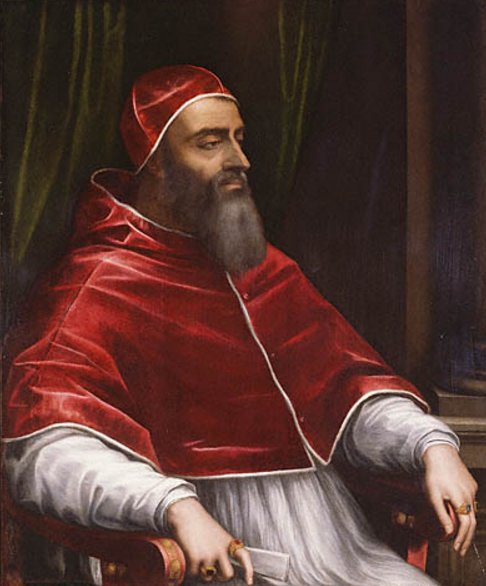

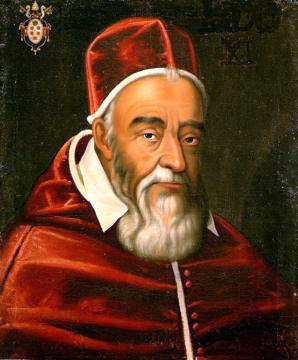




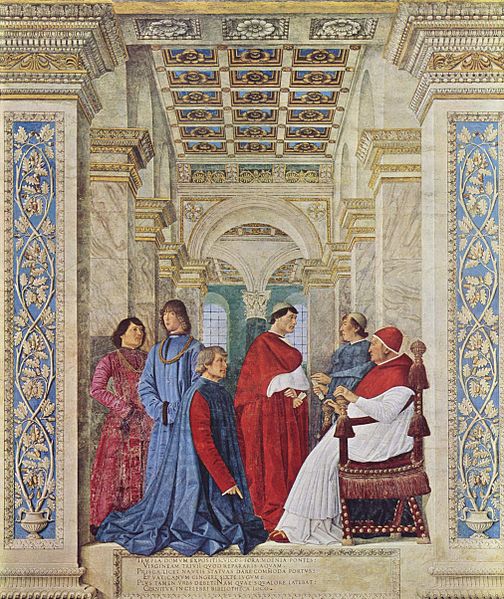
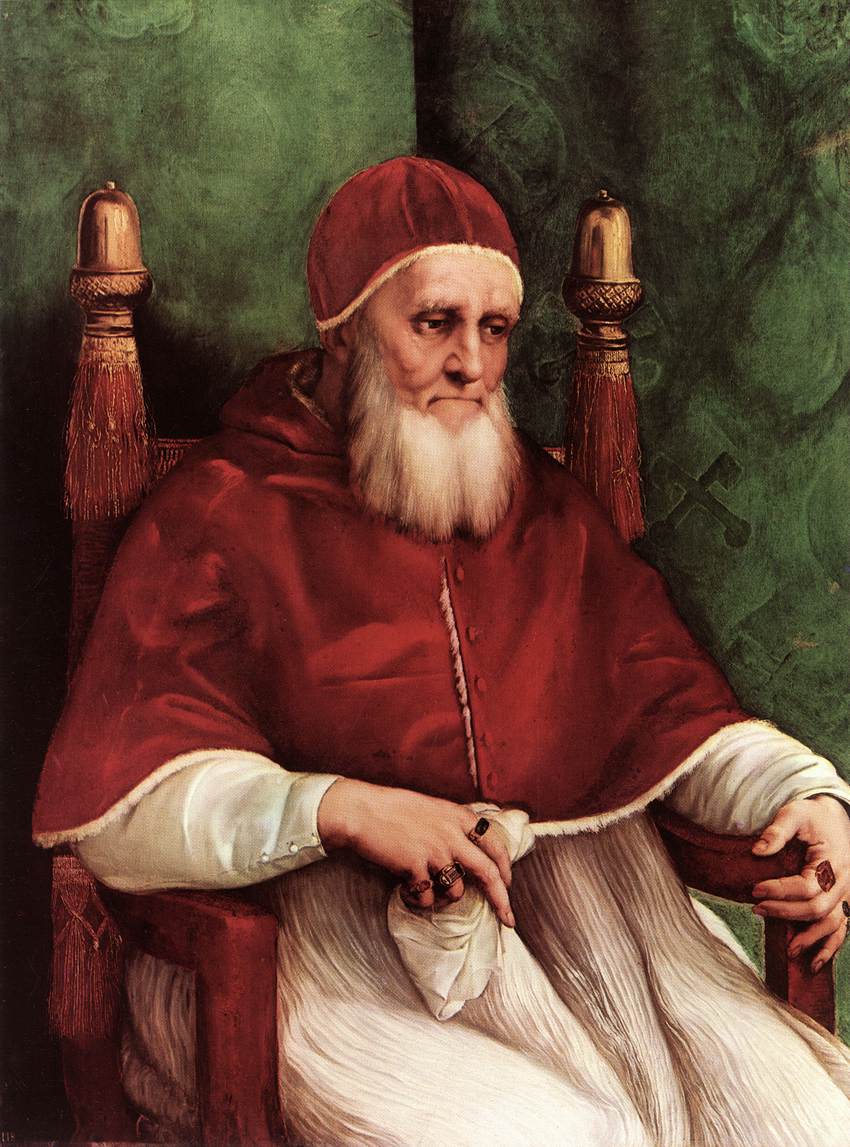


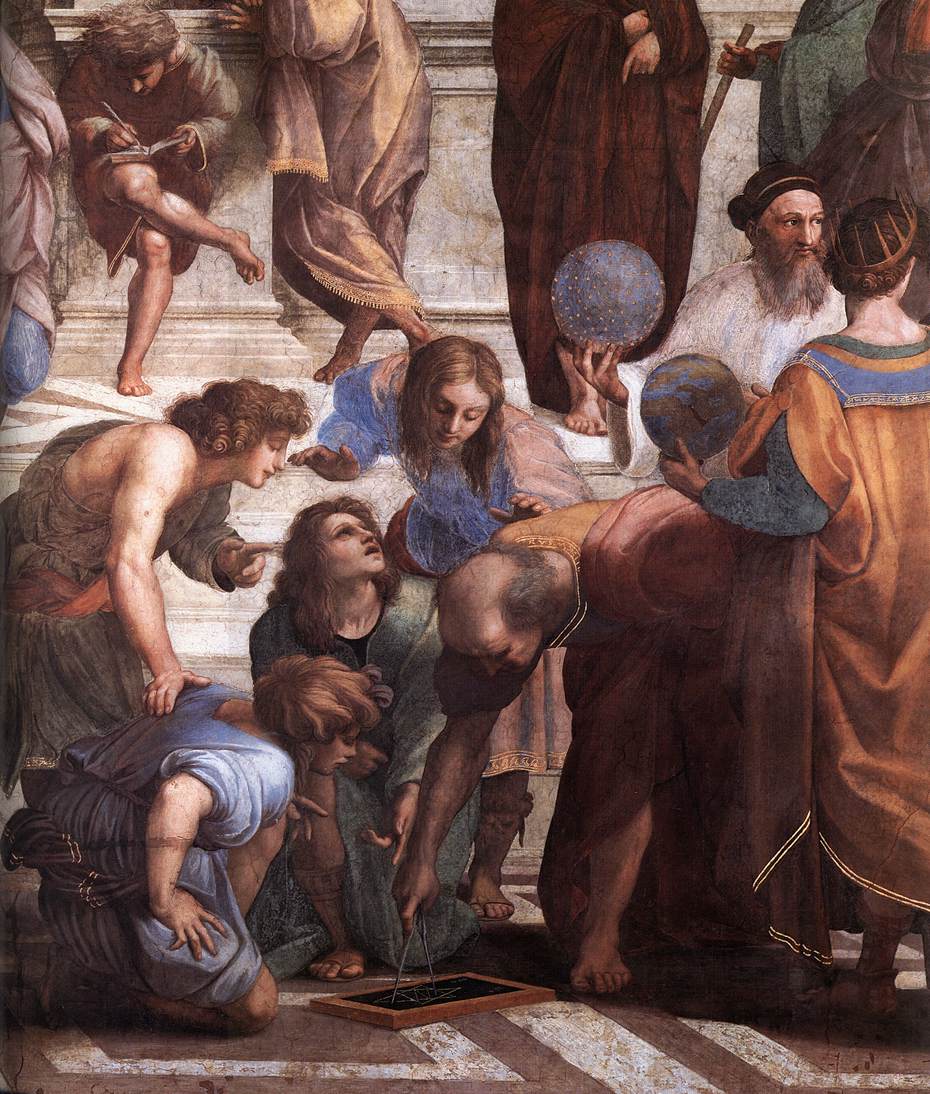


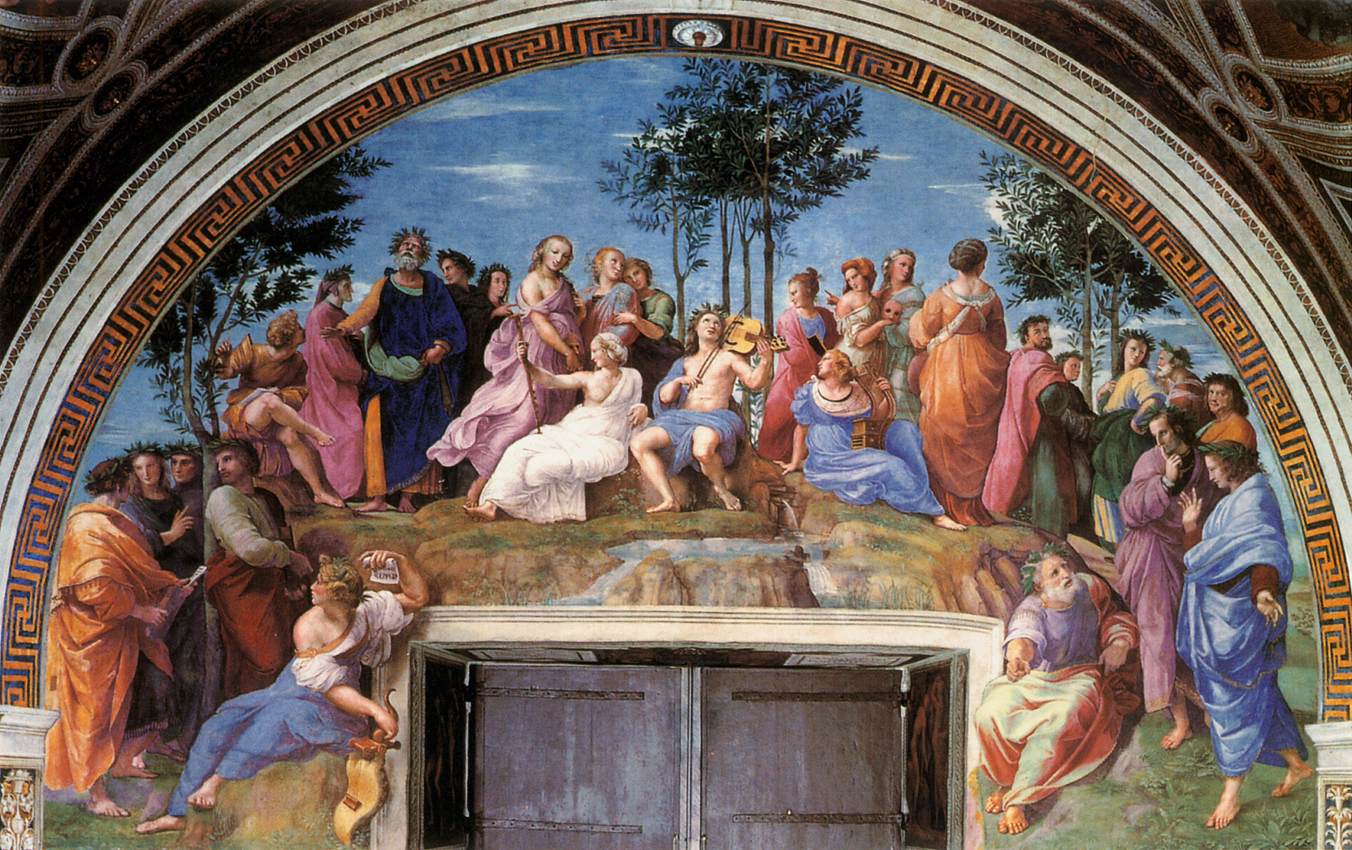





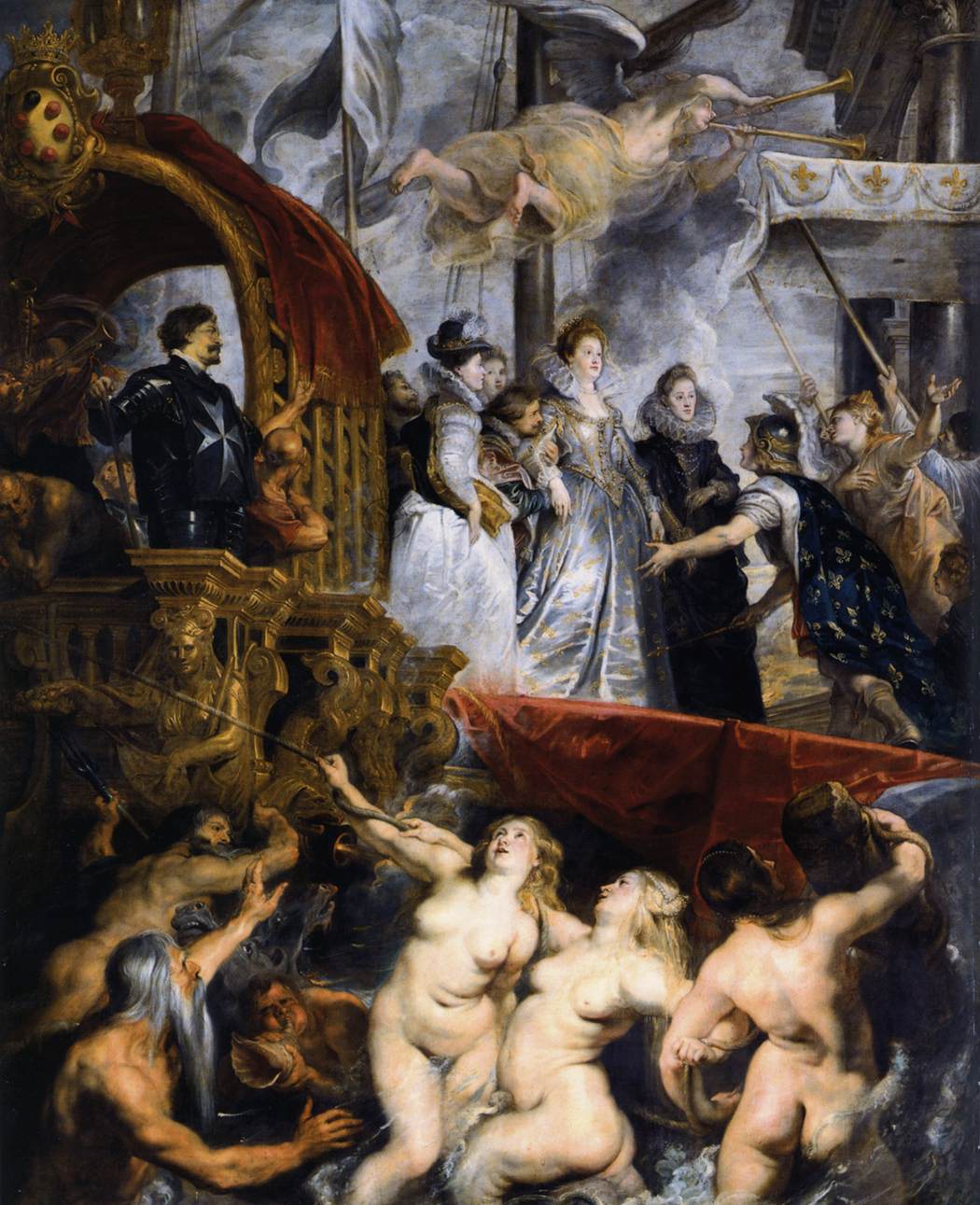

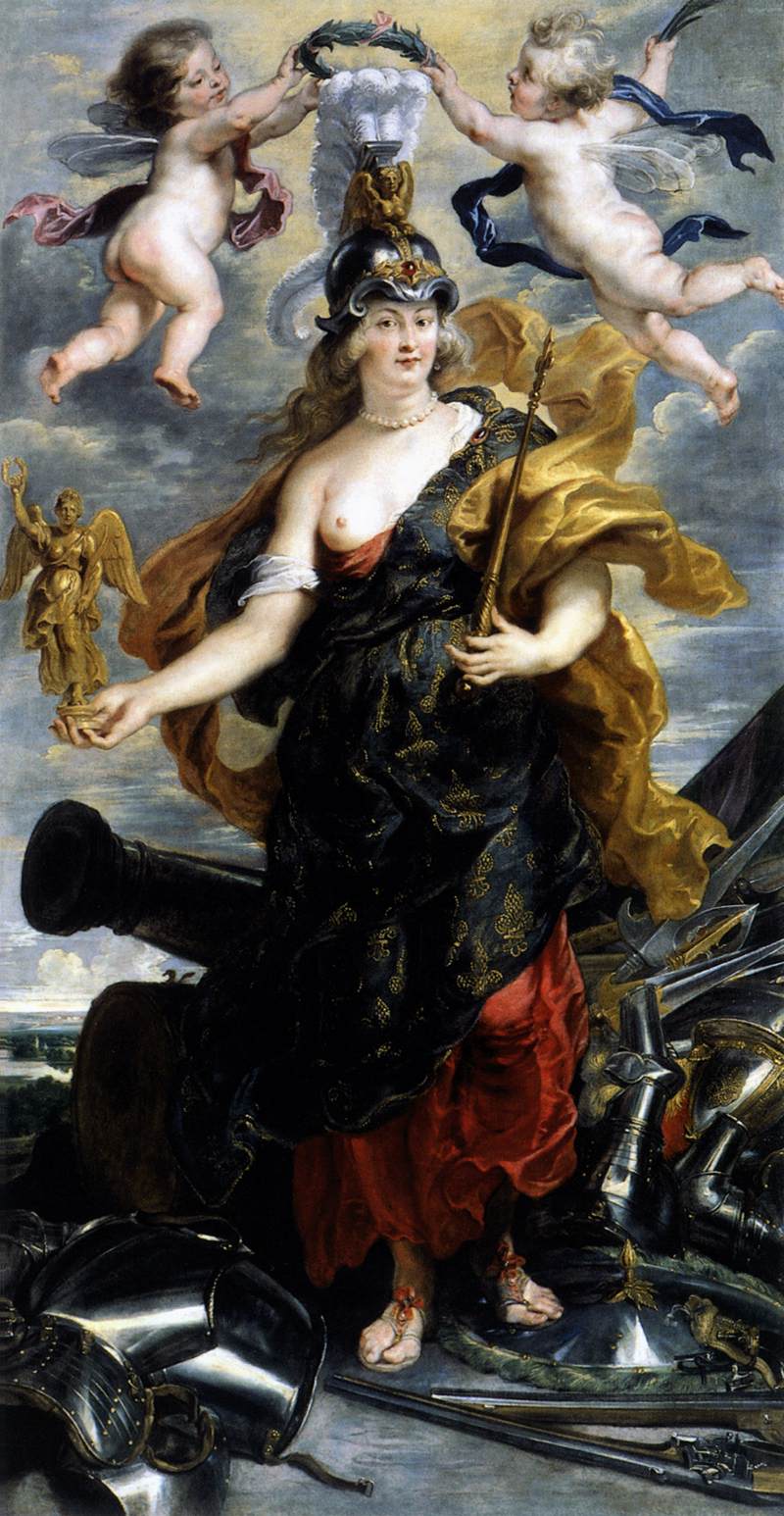


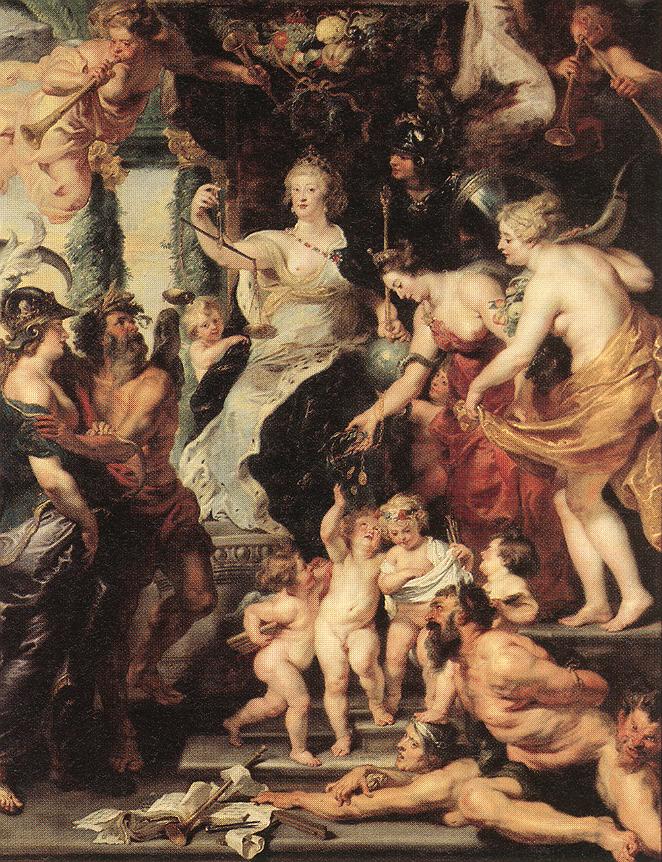
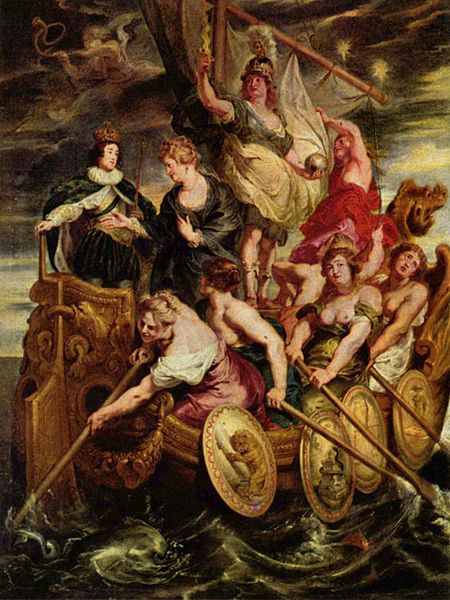



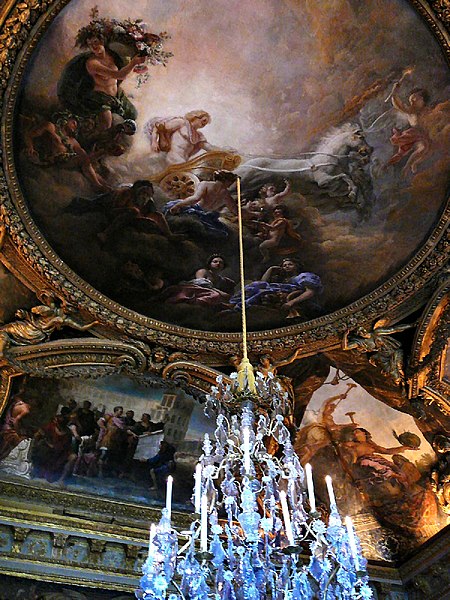

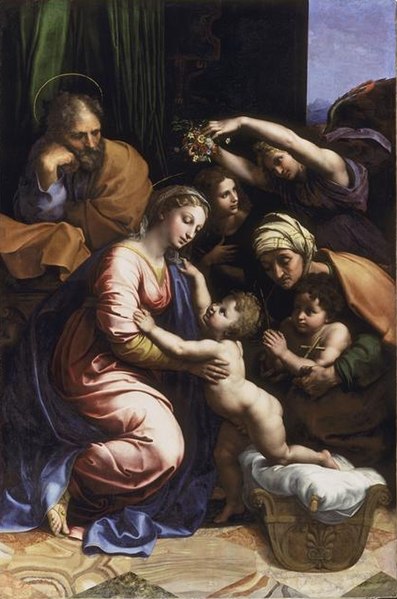



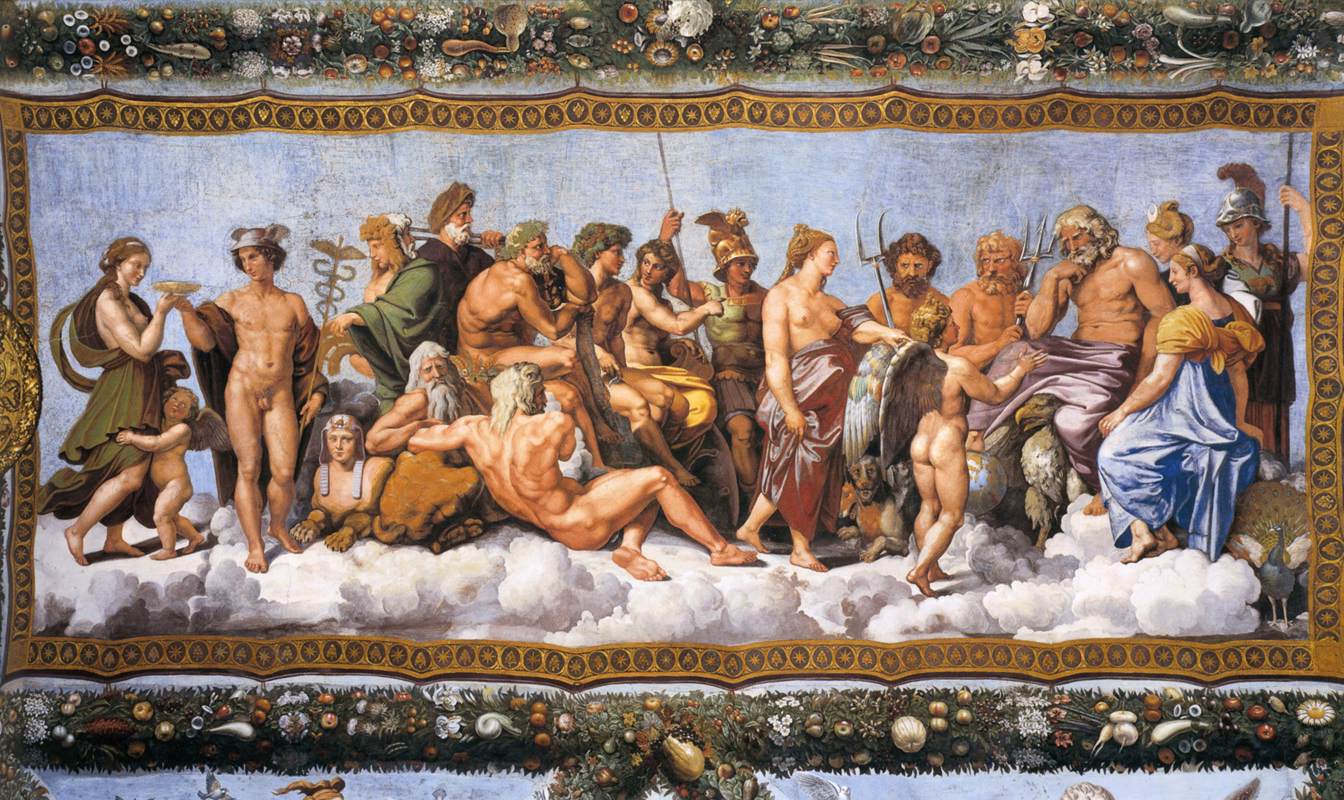
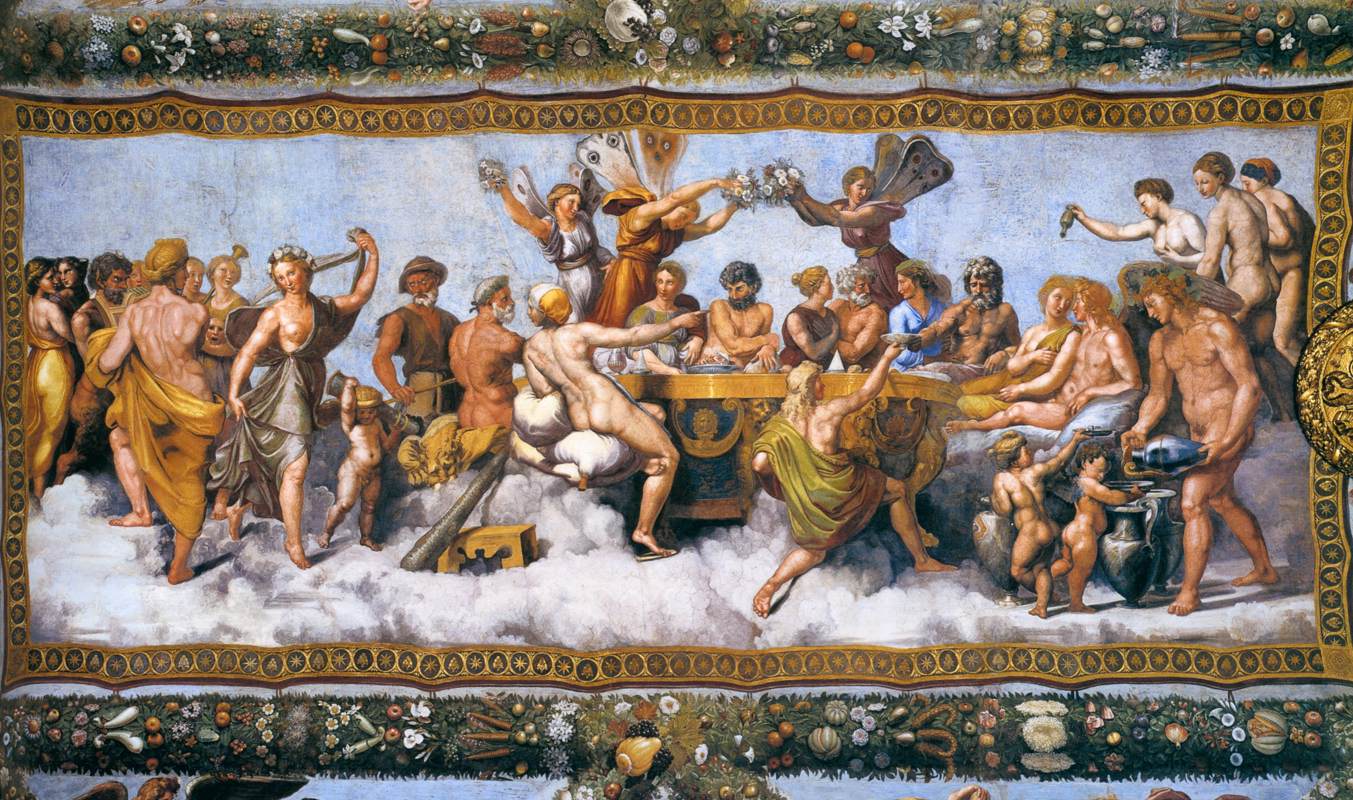








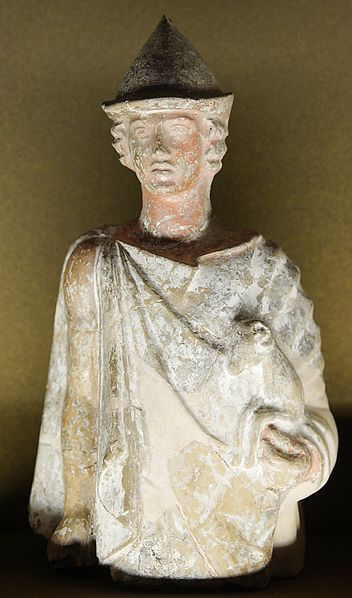

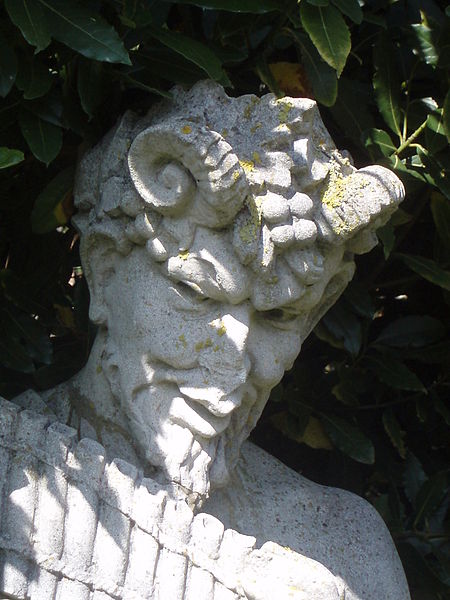
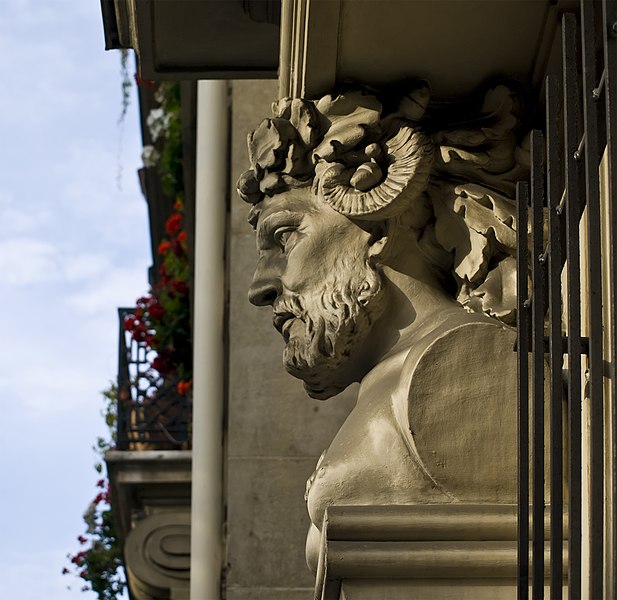




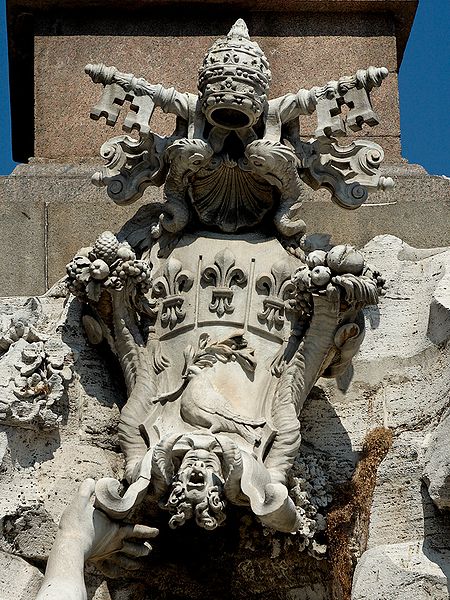

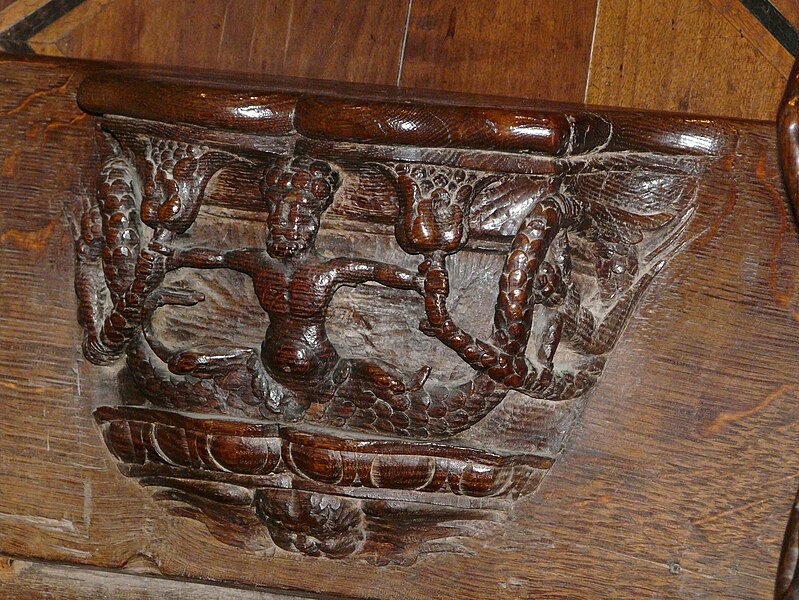
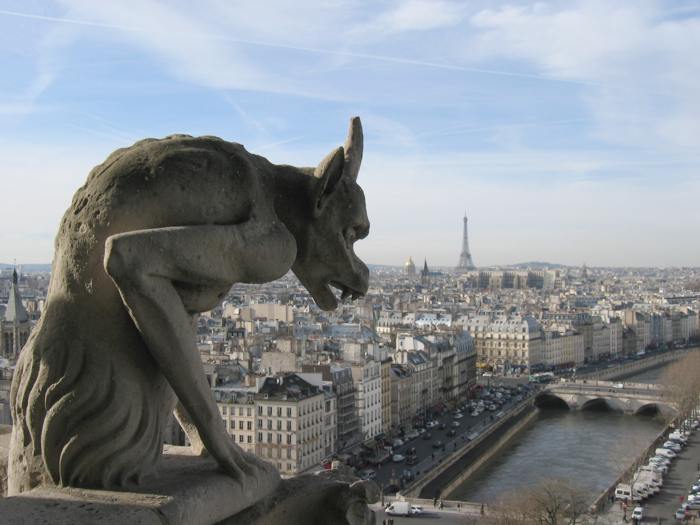











No comments:
Post a Comment